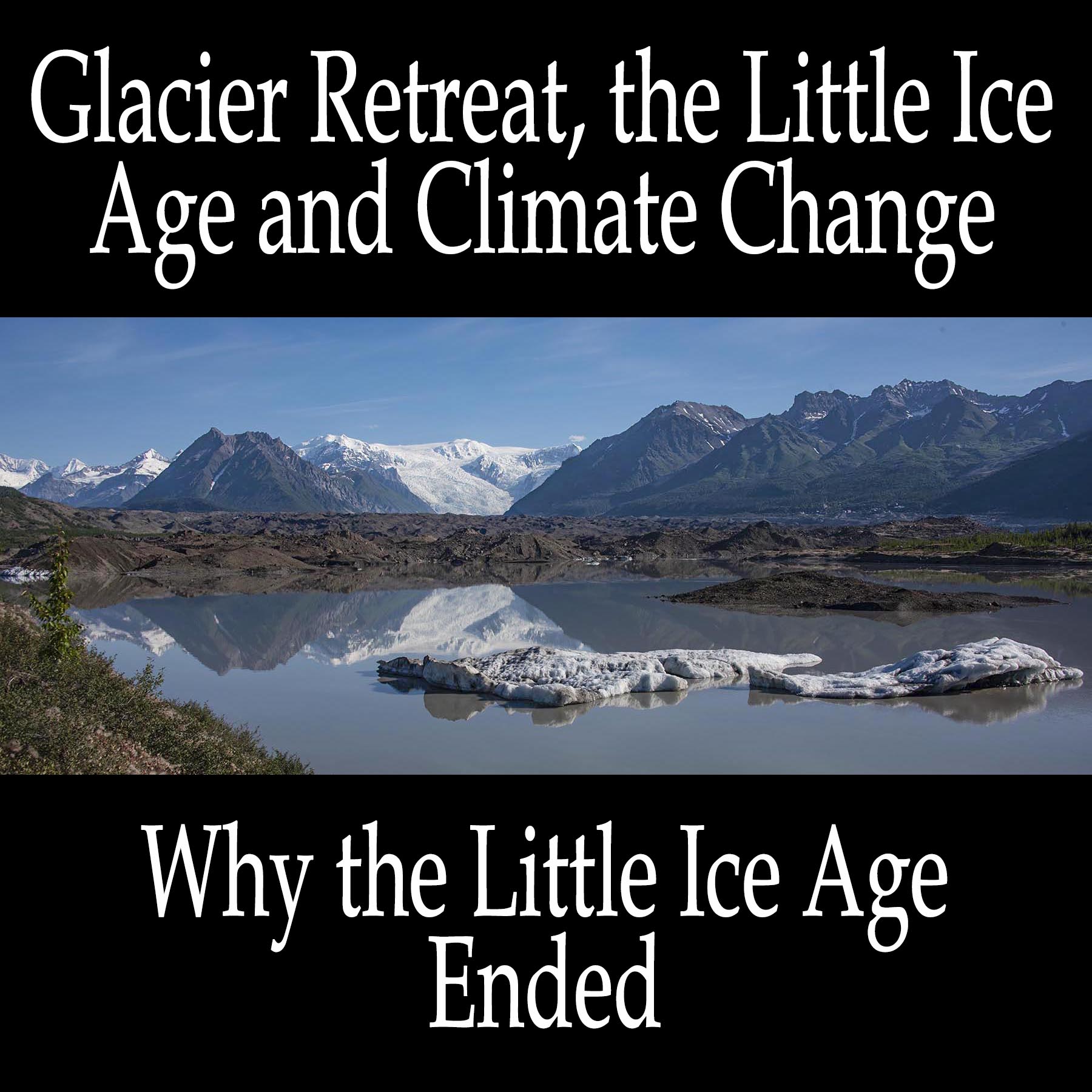
Cover Description: The Kennicott Glacier, Wrangle St. Elias National Park and Preserve, southeast Alaska. The broad and undulating gravel bed that stretches across the valley floor is actually the four mile-wide Kennicott Glacier, a dirt glacier as John Muir labelled such in southeast Alaska in 1879. The gravel layer rides atop the glacier from rockfalls on the interior. Gravel depth of six inches or less heats up the glacier, but deeper than 6 inches it acts as an insulator and reduces melt. Even so, the 50 years previous to 2007 the glacier melted on average four or five feet vertical feet per year. Since 2007 the melt has tripled. National Park Service
Glacier Retreat, Climate Change, and Why the Little Ice Age Ended
(An abridged version was published on Truthout.org on February 7, 2023, with the title –
Melting Glaciers Show Why Climate Targets Below 1.5°C Are Needed,
Earth’s systems can restore themselves, but not if global climate policy permits 1.5 degrees Celsius of warming.)
One of the most dramatic images of climate change actually happening is repeat photography of glacial retreat. Eighty-five percent of Northern Hemisphere glaciers terminating in the ocean have been retreating since 2000. (1) A photo of a calving glacier really sends a picture of collapse. Nine-thousands gigatons of ice have melted from glaciers since the 1960s increasing ocean levels by over an inch with the rate of glacier ice loss tripling since 1990. (2)
Unknown by almost all however, glaciers worldwide have also been retreating on average since the end of the Little Ice Age. This is called “the recovery from the Little Ice Age.” The Little Ice Age was a 450 year long period from around 1400s to the mid 1800s where the average global temperature fell by 0.6 degrees C. Compare this to 6 degrees C cooling below normal with the last 100,000-year long glacial period or ice age pulse that ended about 10,000 years ago. Cooling during the Little Ice Age was not persistent and was different in some places than others, but globally Earth cooled a little.
“Thanks to paleoclimatic records, climate scientists have identified four cold and warm “climate epochs” during the past 2,000 years: the Roman Warm Period, which covered the first centuries of the Common Era; the Dark Ages Cold Period, from 400 to 800; the Medieval Warm Period between 800 and 1200; and, most recently, the Little Ice Age.” (3)
Encyclopedia Britannica says there were several probable causes of the Little Ice Age: “It was likely a combination of factors that included long periods of low sunspot activity (which reduced the amount of solar energy that reached Earth), the effects of explosive volcanic eruptions, and drastic changes in the North Atlantic Oscillation (the irregular fluctuation of atmospheric pressure over the North Atlantic Ocean).”
Bear Glacier 2000 and 2018
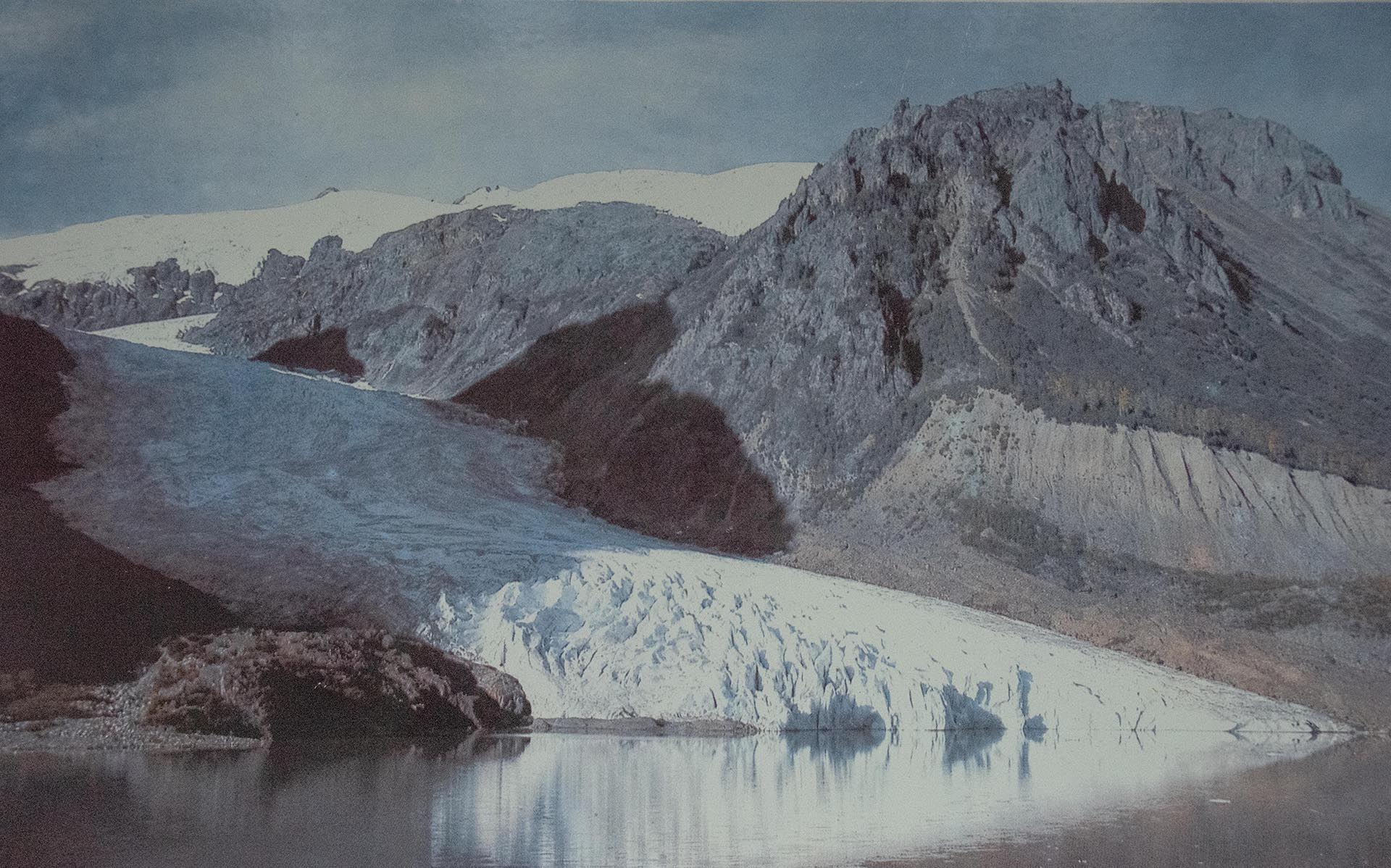
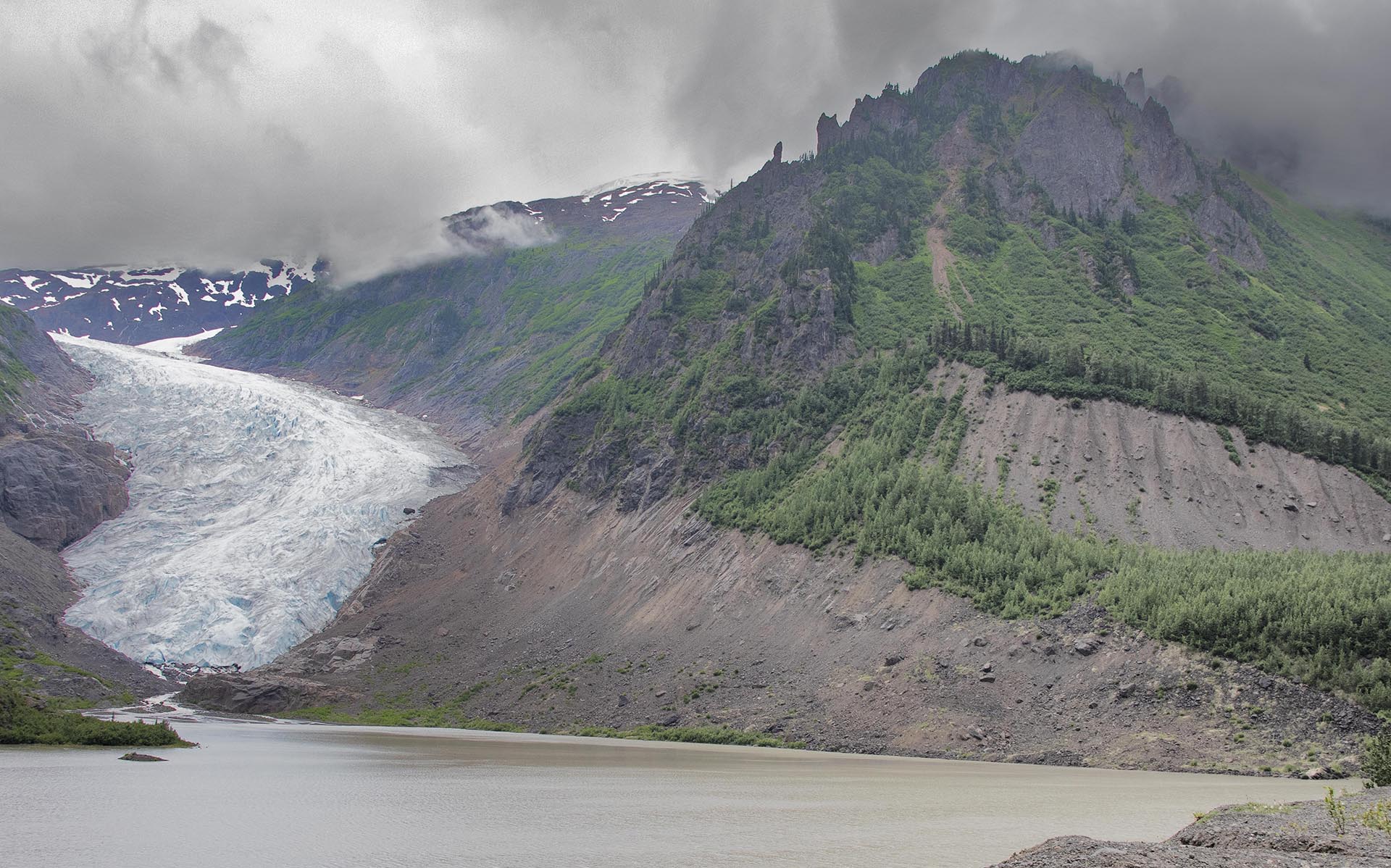
Bear Glacier near Stewart, British Columbia, 2000 and 2018.
Credit: 2000 Canadian National Park Service, 2018 Bruce Melton
The Journal of Space Weather and Space Weather and Space Climate has found, “Climate model simulations suggest multiple factors, particularly volcanic activity, were crucial for causing the cooler temperatures in the Northern Hemisphere during the Little Ice Age. A reduction in total solar irradiance likely contributed to the Little Ice Age at a level comparable to changing land use.” (4)
Akasofu 2010 believes the “recovery” from the Little Ice Age was a recovery of solar strength after the low levels caused the cool period and that this recovery is ongoing today. The pivotal finding from this work was that warming beyond the publication date of this work in 2010 would continue on a linear path increasing solar output of 0.5 degrees C per century, or about 0.9 C by 2100. (5) In 2010 this concept was still plausible with observed warming at about 0.5 C above 1951 according to Akasofu. current warming of 1.2 C in 2020 according to the Intergovernmental Panel on Climate Change Sixth Report (6) seems to have eliminated Akasofu’s work from candidacy.
NASA doesn’t think it was solar though, in that the Maunder Minimum was a very cool period on the surface of the sun with very little to no sunspot activity, “there is little evidence that the Maunder Minimum sparked the Little Ice Age.” The Global Change Research Program in the US also does not believe there is any way that changing solar output could have caused the Little Ice Age either. (7)
One of the latest findings in December 2021 out of the University of Massachusetts Amherst shows that high solar activity and low volcanic activity created changes in atmospheric circulation that allowed an intrusion of warm water into the North Atlantic, which in turn created a large amount of tidewater glacier calving and an export of large amounts of ice into the North Atlantic, disrupting the northward transport of warm water via the Gulf Stream and spreading cooler than normal temperatures farther south than normal. The authors also say these forcings were not strong enough to create such a long cold period as the Little Ice Age and that volcanoes must have done the rest. (8) But both NASA and the Global Change Research Program do not think it was solar…
Matanuska Glacier near Anchorage, Alaska, 2007 and 2018
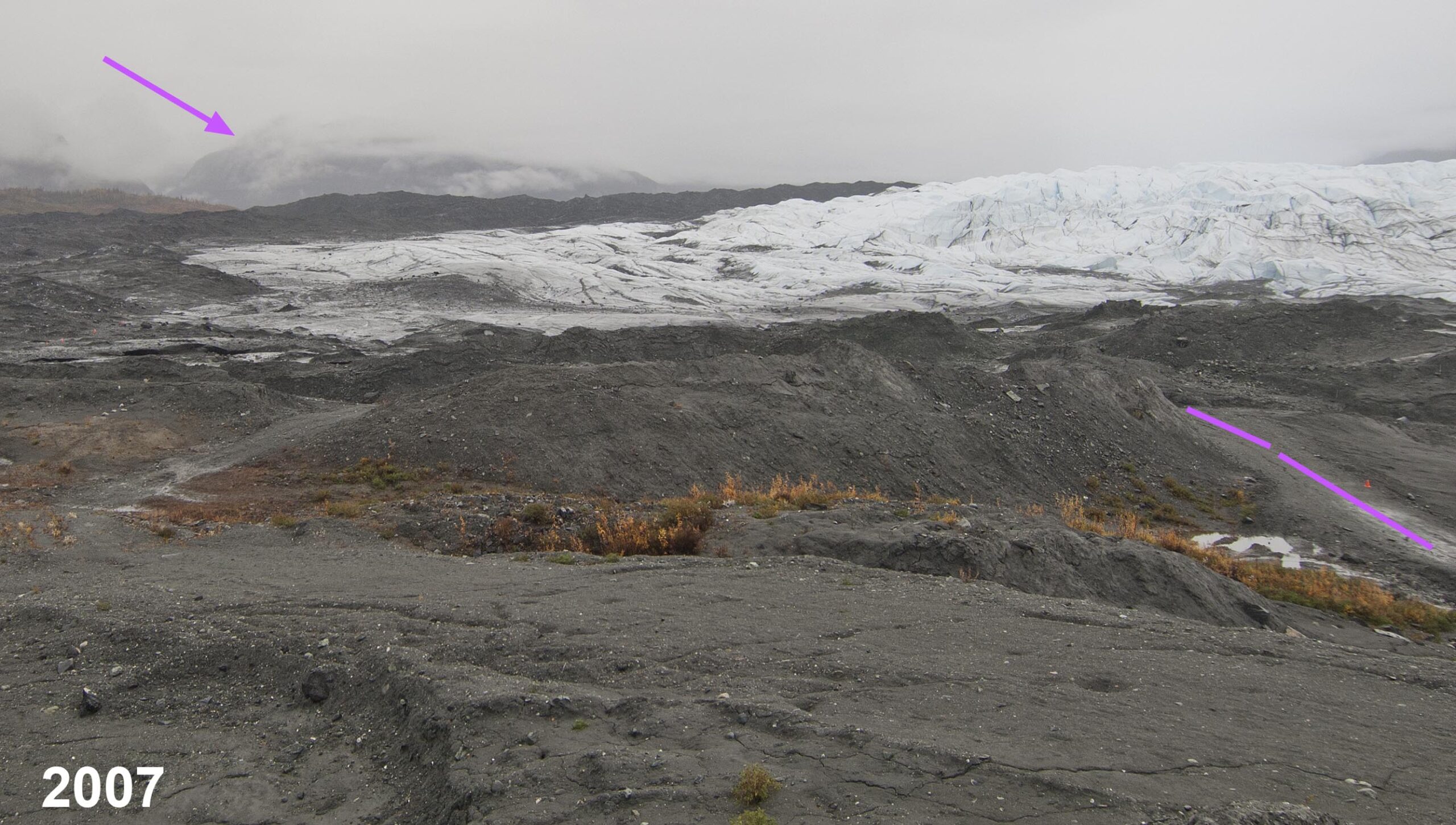
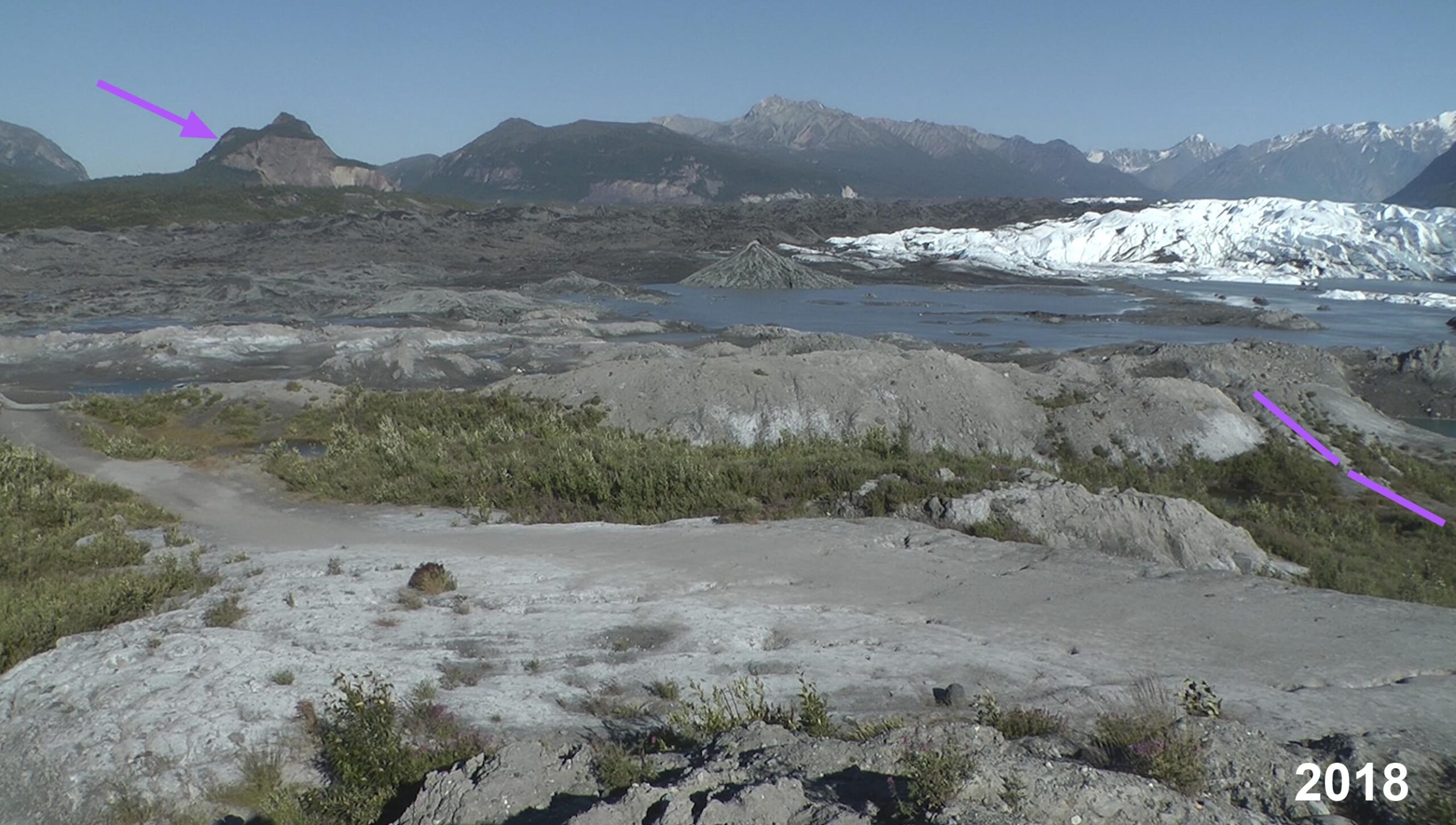
Matanuska Glacier near Anchorage, Alaska, 2007 and 2018.
Credit: 2007 and 2018 Bruce Melton
How did the Little Ice Age End?
One hypothesis on why glaciers began retreating in the European Alps at the end of the Little Ice Age concluded that the industrial revolution kicked off Alpine glacier retreat fifty years before atmospheric warming began in the Alps. The 2013 study showed how in about 1850 increased soot deposition from burning coal in industry and trains in Europe created glacial deposition that absorbed heat and reversed glacial advance, ending the Little Ice Age. The authors reveal that when glaciers were retreating rapidly in the late 19th century and early 20th centuries, temperatures in the Alps were cooler than in the late 18th to early 19th centuries at the end of the Little Ice age, so glaciers in the Alps should have been growing and not retreating. It was the soot deposition on the glaciers, where black soot absorbs nine times more heat energy from the sun than white ice, that overwhelmed the cooler temperatures and created the retreat. (9)
The industrial soot hypothesis however, was based on low resolution ice core interpretation. In 2018, high resolution interpretation of sub-annual soot deposition from European glacier cores back to 1750 showed the industrial revolution did not significantly increase soot deposition on European glaciers until about 1875, when 80 percent of the increasing glacial retreat trend had already occurred, ending the “soot hypothesis.” (10)
Muir Inlet Scene, Glacier Bay Alaska, 1880 and Today
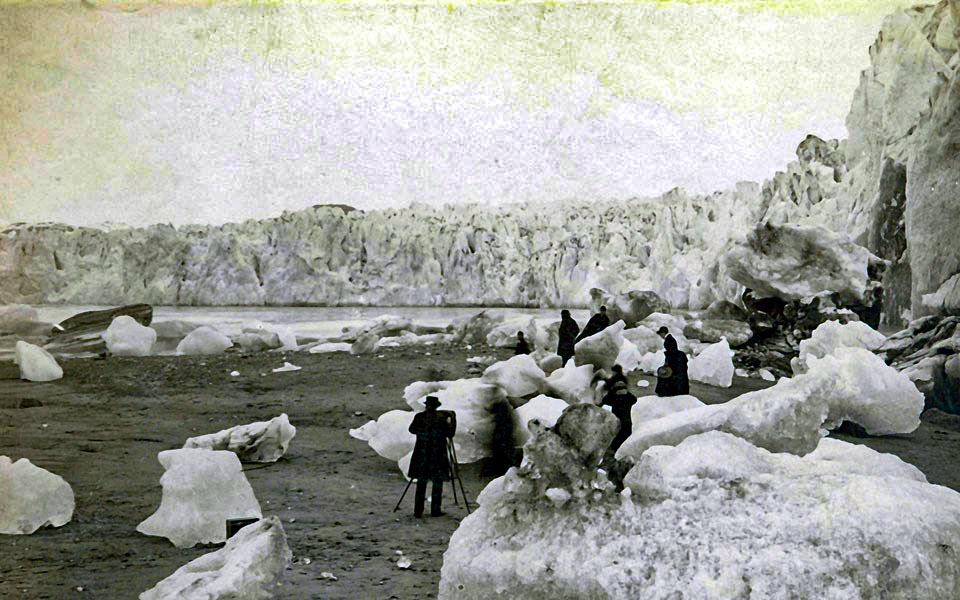
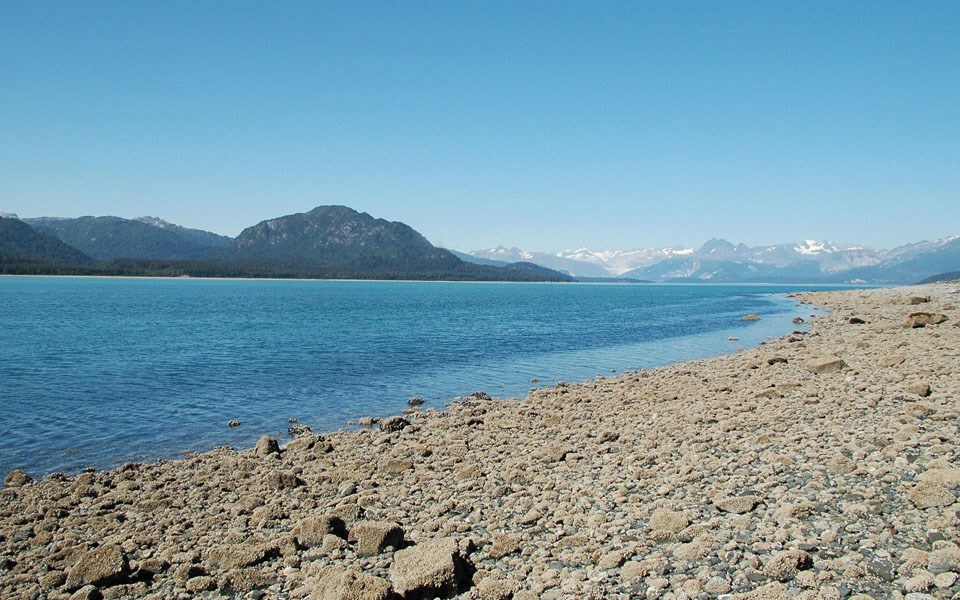
Steamship passengers enjoy the icy scene in Muir Inlet,
Credit: G.D. Hazard (National Park Service)
Right image: Muir Inlet shoreline as seen today.
Credit: Bruce Molina/USGS (National Park Service)
Switzerland’s glaciers have lost half their volume 1931 to 2016 and almost all of the loss has occurred since 1990. (11) Beyond ocean terminating glaciers, most of the world’s mountain glaciers have been retreating for more than a century as well. Retreat is evident on all continents, and the retreat rate has increased recently. (12)
Rhone Glacier, Swiss Alps, 1900 and 2008
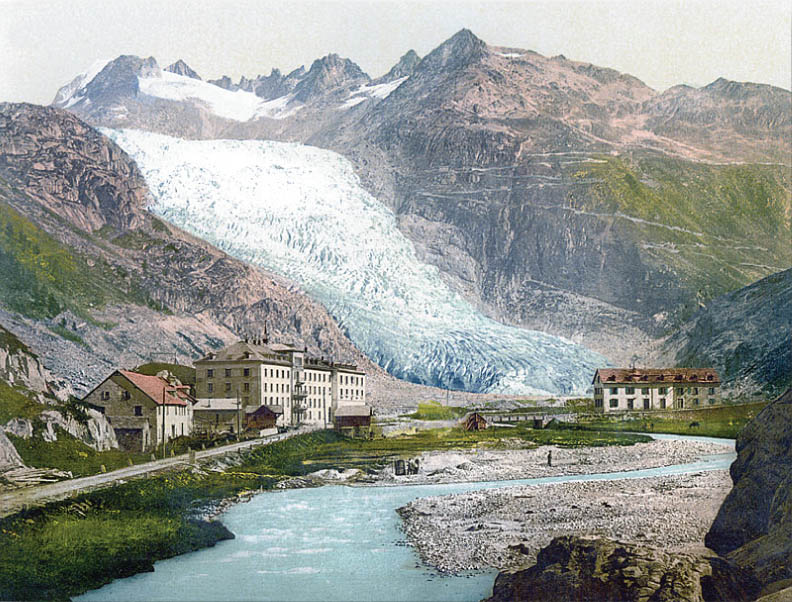

Left image: Rhone Glacier Swiss Alps 1900 (Lamont Doherty)
Right image: Rhone Glacier Swiss Alps 2008 (Lamont Doherty
Further evaluating volcanic eruptions that cool our climate from sulfates ejected into the stratosphere, the last 150 years of the Little Ice Age had only about half of the volcanic eruptions as the first 300 years, possibly allowing warming at the end of the cooling period. But, between 1850 and 1900, at the very end of the Little Ice Age, the largest group of volcanoes erupted in the entire 1,000 year period from 1,000 to 1990 CE (of the Current Era.) How then, does the largest grouping of cooling volcanoes over the previous 1,000 years end the Little Ice Age? (13)
Reid Glacier, Glacier Bay, Alaska, 1899 and 2003
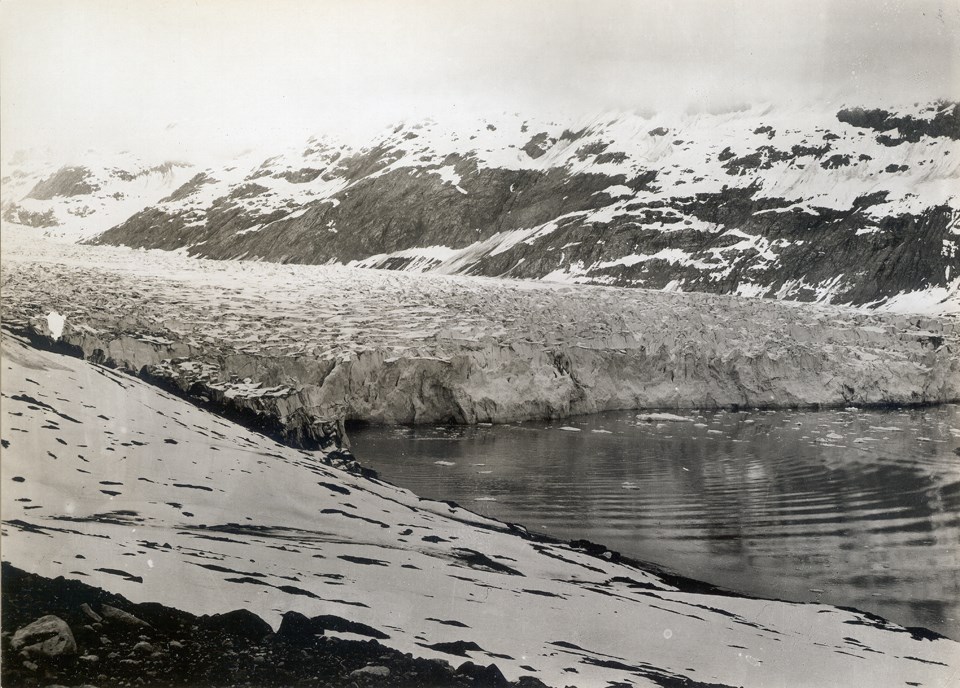

Reid Glacier in 1899 and 2003 (National Park Service)
Obviously there is a lot of discussion about not only the cause of the Little Ice Age, but the end. And it is this ending that is important in this story. It is widely accepted that, “the Little Ice Age ended,” or that the mid- to late-19th century saw a “natural recovery” from the Little Ice Age where we warmed up a little, or “back to normal.”
There is an elegant solution to this conundrum that there was a cause that ended the Little Ice Age. This is that, the Little Ice Age did not end, it was ended, by climate change.
This hypothesis that the Little Ice Age was ended by climate change is called the Ruddiman Hypothesis or the Early Anthropocene Hypothesis and it goes all the way back to 8,000 years ago when humankind first started clearing forests for agriculture and domesticating animals. (14)
William Ruddiman is a paleoclimatologist professor emeritus at the University of Virginia who spent most of his career at Lamont-Doherty Earth Observatory at Columbia University. Notably, Ruddiman is also Fellow of both the Geological Society of America and the American Geophysical Union. He first began publishing on the Early Anthropocene Hypothesis in 2003. The predominant theory of global warming at the time that persists through today is that humankind’s greenhouse gas emissions didn’t warm Earth in an appreciable way until the beginning of the Industrial Era in the late 1800s when burning fossil carbon became widespread.
Muir Glacier, Glacier Bay, Alaska, 1941 and 2004
Left image: Muir Glacier 1941 W.O. Field (National Park Service)
Right image: Muir Glacier 2004 USGS
Before the industrial period it was supposed our climate was stable for the last 10,000 (ish) years in a period called an interglacial, which for about the last million years has been a short warm period between ice age pulses that last about 100,000 years. Ice age pulses are about 6 degrees C cooler than today (11 F), whereas the small fluctuations in temperature over the last 10,000 years with the Medieval Warm Period and Little Ice Age fluctuated a degree C (1.8 F) or less. Ruddiman proposes that our climate is much more sensitive than commonly assumed, and that it was not the age of industrialization that started climate change, but greenhouse gas emissions and reduced sequestration as forests were progressively cleared for agriculture and then with additional methane emissions from rice flood agriculture.
This makes a lot of sense considering how much more sensitive our Earth systems are to warming impacts than has been projected for decades. The following list shows the sensitivity of Earth systems with how much further ahead of projections impacts are happening:
- Major hurricane intensity, 50 years ahead
https://journals.ametsoc.org/bams/article/101/3/E303/345043/Tropical-Cyclones-and-Climate-Change-Assessment - Gulf Stream reduction, 90 years ahead (here and here)
- Amazon flip, 70 years ahead
https://agupubs.onlinelibrary.wiley.com/doi/full/10.1002/2015GB005133 - Antarctic collapse, 100 years ahead (here and here)
- Arctic sea ice, 70 years ahead
http://www.springerlink.com/content/c4m01048200k08w3/fulltext.pdf - Permafrost collapse, 70 years ahead
https://agupubs.onlinelibrary.wiley.com/doi/epdf/10.1029/2019GL082187 - Upper ocean stratification, 6 times faster than projected
https://www.nature.com/articles/s41586-021-03303-x - Ocean acidity, 62 years ahead
http://www.pnas.org/content/early/2008/11/20/0806318105.full.pdf+html - Ocean temperature, 40 years ahead
https://www.nature.com/articles/s41467-022-33930-5 - Winter storms, 80 years ahead in Southern Hemisphere Ocean
https://phys.org/news/2022-05-reveals-climate-rapid.html - Air temperature in the Arctic, up to 80 years ahead
https://tc.copernicus.org/articles/14/4279/2020/tc-14-4279-2020.pdf - Thermokarst lake drainage ahead, 60 to 80 years ahead
https://tc.copernicus.org/articles/14/4279/2020/tc-14-4279-2020.pdf - Average 30-year Houston rainfall, 80 years ahead
http://www.austintexas.gov/page/flood-risk-and-atlas-14-details - Sea level rise, 80 percent greater than projected
http://www.copenhagendiagnosis.com/default.html - Ocean heat uptake, 50 percent greater than projected
http://www.copenhagendiagnosis.com/default.html - Half of known tipping points are up to 100 years ahead of projections
https://www.nature.com/articles/d41586-019-03595-0
Ruddiman’s Early Anthropocene Hypothesis
The Early Anthropocene Hypothesis starts about 8,000 years ago as atmospheric carbon dioxide (CO2) began to slowly rise at the dawn of agriculture when humans first started clearing forests in a large way. This happened at the same time that Earth’s orbital cycles began to change enough to cause Earth to begin to cool. Early Anthropocene greenhouse gas emissions warming balanced out with orbital cycle cooling resulting in no temperature change. Then about 5,000 years ago, methane (CH4) began to rise with the discovery of rice flood agriculture. The concentrations of CO2 and CH4 should have both been falling by this time due to orbital changes but Early Anthropocene warming continued to balance out Earth’s temperature. For nearly 8,000 years, warming from the rising levels of CO2 and CH4 counterbalanced cooling by orbital cycles and our climate appeared stable. Ruddiman tells us, “The consequences of these surprising rises have been profound. Without them, current temperatures in northern parts of North America and Europe would be cooler by three to four degrees Celsius—enough to make agriculture difficult.”
Ruddiman goes on, “The estimated warming caused by these early gas emissions reached a global-mean value of ∼0.8 ◦C and roughly 2 ◦C at high latitudes, large enough to have stopped a glaciation of northeastern Canada predicted by two kinds of climatic models.” He also suggests causes for the slight warmings and coolings of the last 1,000 years with the Medieval Warm Period, Little Ice Age and etc., “CO2 oscillations of ∼10 ppm in the last 1000 years are too large to be explained by external (solar-volcanic) forcing, but they can be explained by outbreaks of bubonic plague that caused historically documented farm abandonment in western Eurasia.” Farm abandonment allowed forest regrowth, which served as an additional sink for CO2 causing climate cooling as CO2 concentrations fell.
Ruddiman’s Early Anthropocene Hypothesis
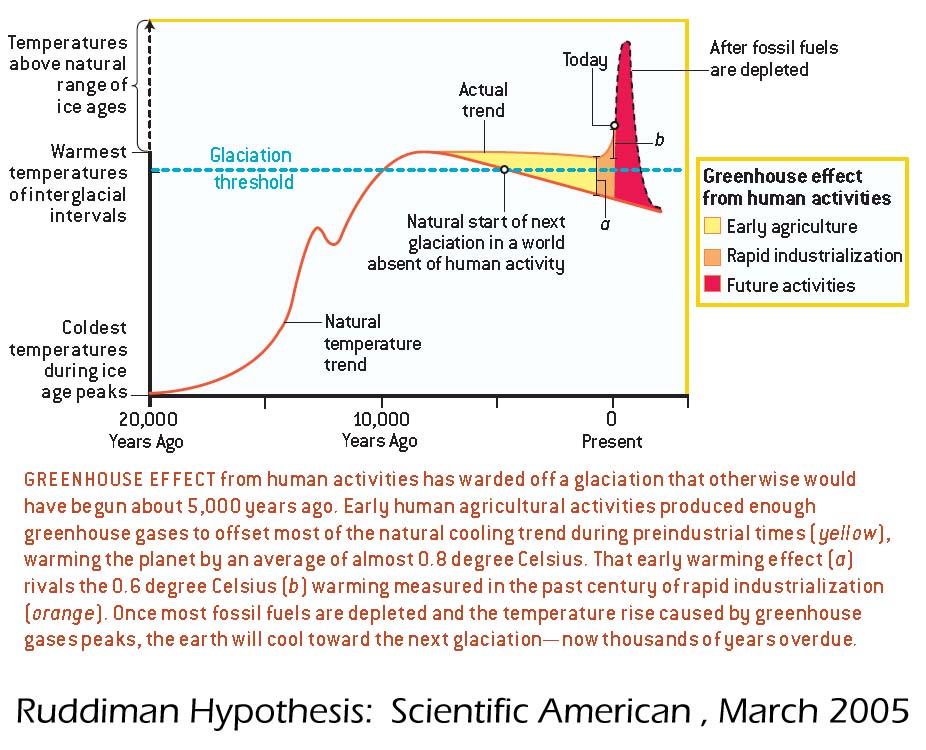
Modeling of our climate without these extra greenhouse gas inputs, with cooling in northern parts of North America and Europe of 3 to 4 degrees C (5.4 to 7.2 F) would have caused, “an incipient ice age—marked by the appearance of small ice caps—would probably have begun several thousand years ago in parts of northeastern Canada. Instead the earth’s climate has remained relatively warm and stable in recent millennia” Ruddiman tells us.
Plateau Glacier 1961 and 2003
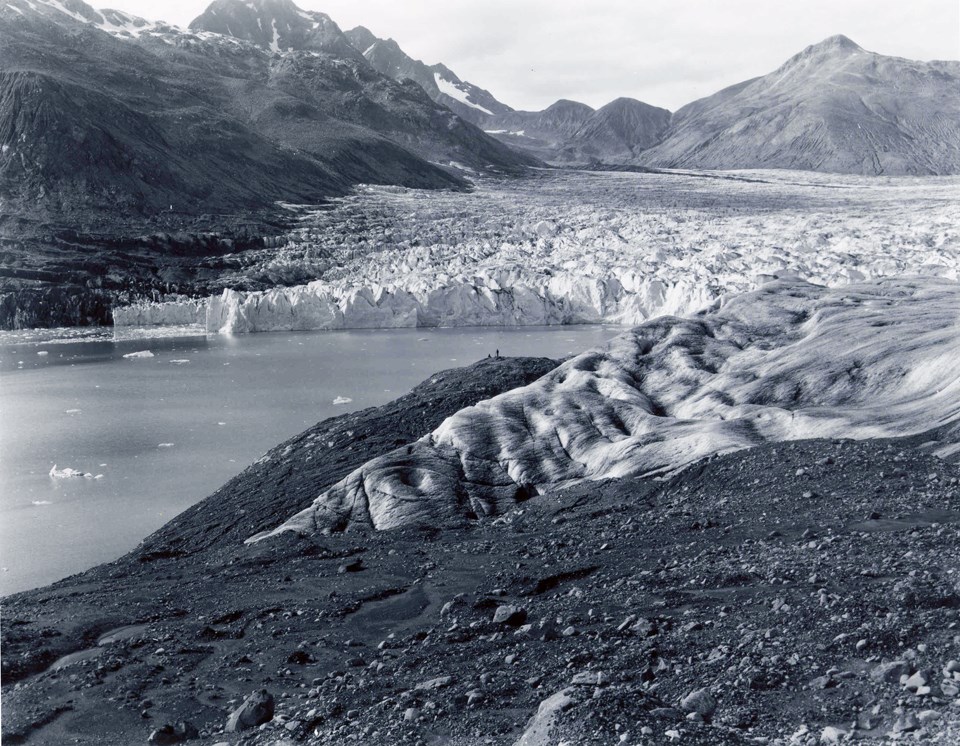
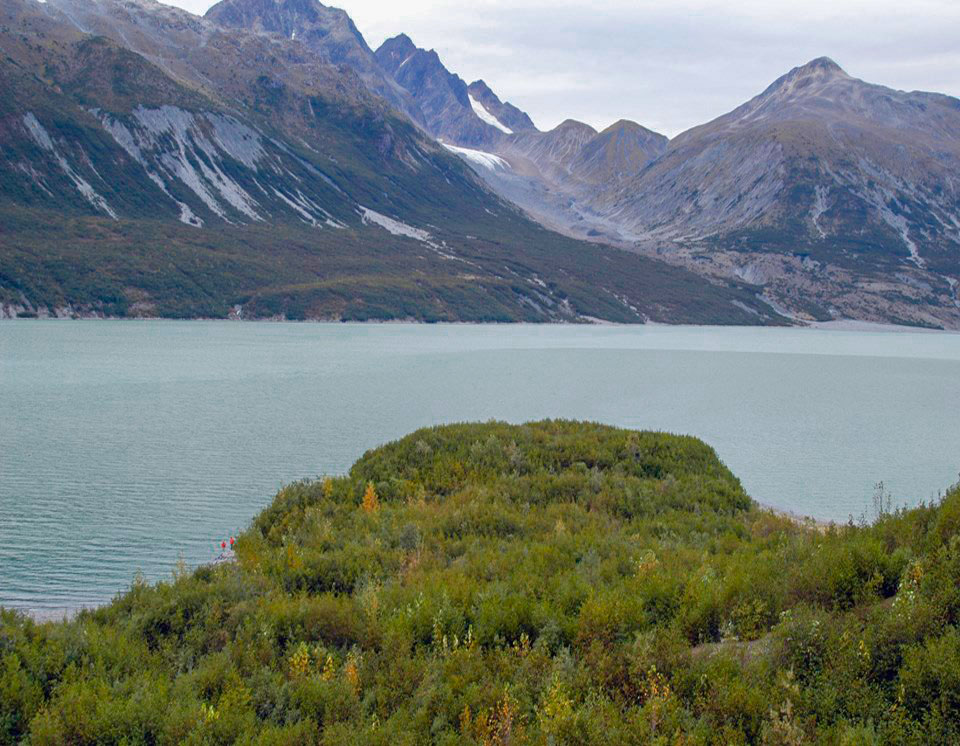
Left image: 1961, Credit: M.T. Millet
Right image: 2003, R.D. Karpilo, National Park Service
In 2019 a mega study by Stephens et al., was completed that shows significant support for the Early Anthropocene Hypothesis. From the abstract, “An empirical global assessment of land use from 10,000 BP to 1850 CE reveals a planet largely transformed by hunter-gatherers, farmers and pastoralists by 3,000 years ago, significantly earlier than land-use reconstructions commonly used by Earth scientists. Synthesis of knowledge contributed by over 250 archaeologists highlighted gaps in archaeological expertise and data quality, which peaked at 2000 BP.” (15)
Stephens 2019 also pushes the Early Anthropocene window back another 2,000 years to 10,000 years ago because of widespread Earth systems disruption caused by hunter gatherers: “Biotic communities around the world through transport and propagation of favored species, extensive early land use by hunter-gatherers may also indicate widespread use of fire to enhance success in hunting and foraging. Systematic burning has implications for the global carbon cycle through increased greenhouse gas emissions, for water-cycles through changes in vegetation and evapotranspiration, and for temperatures through changes in albedo.”
Ruddiman’s Early Anthropocene Hypothesis Evidence from Vostok Ice Cores, Antarctica
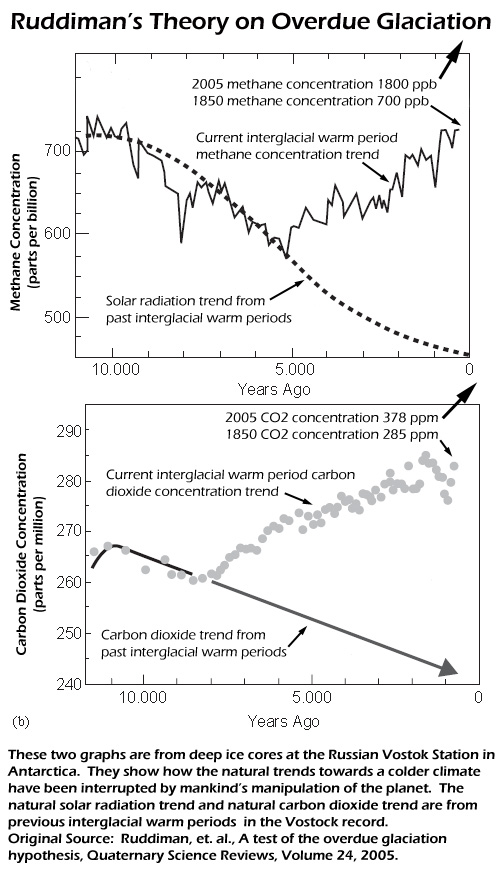
Boulder Glacier 1932 and 1988, Glacier National Park
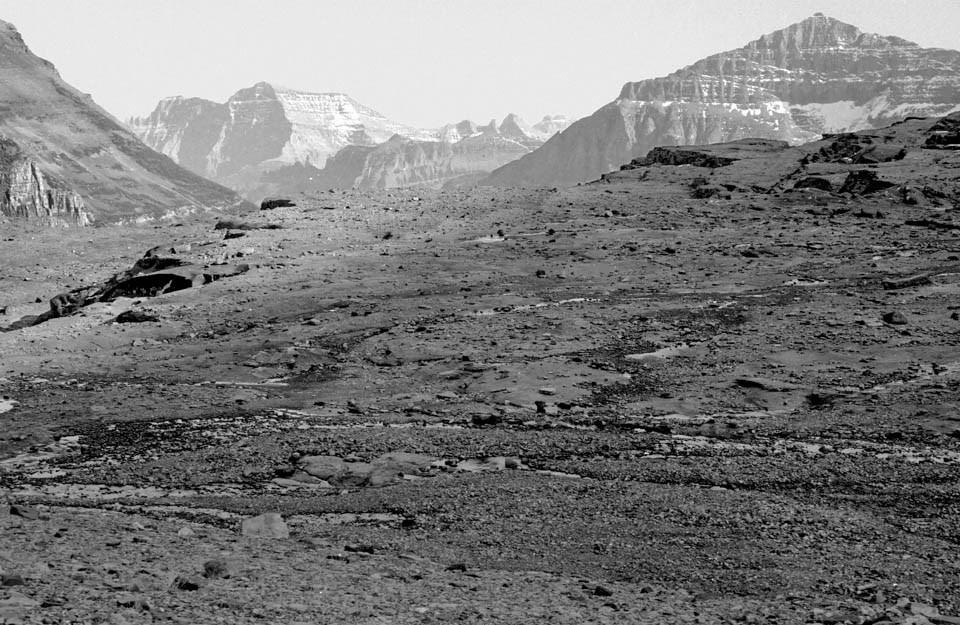
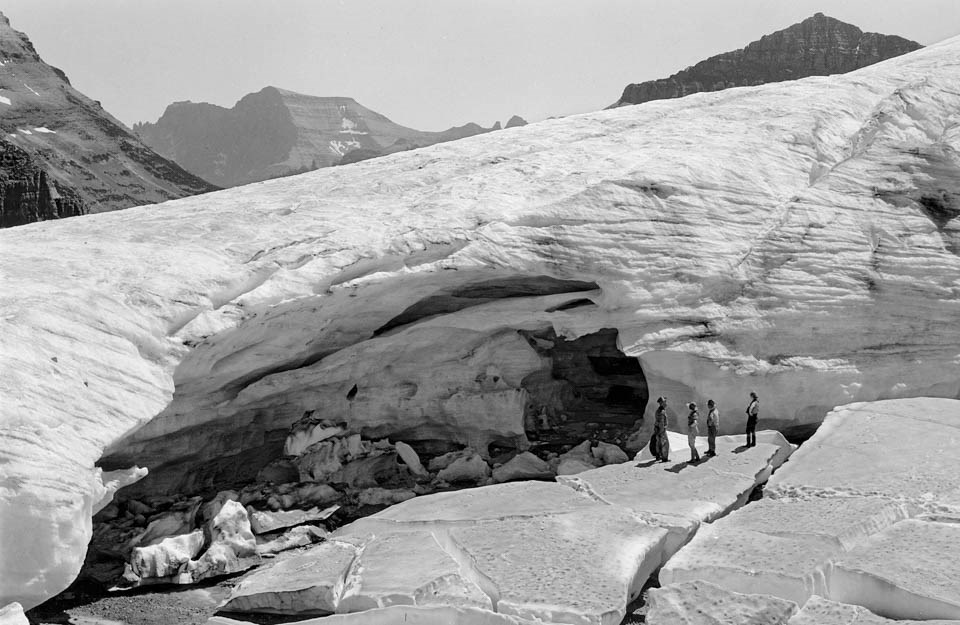
Left image: George Grant, Glacier National Park Archives, 1932
Right image: Jerry DeSanto, K. Ross Toole Archives, 1988
Ruddiman’s latest is a review of recent science on the Anthropocene Hypothesis over the 16 years since his first publishing on the subject. He reports that methane emissions from rice flood agriculture beginning 5000 years ago is now fairly settled in the literature, but CO2 remains a debated and complex issue. Ruddiman has this to say about CO2, “Scientists who work in fields that explore direct ground-truth evidence of human activity (archaeology, paleoecology, etc) tend to favor the hypothesis, while those who rely on geochemical indices of environmental proxies are less positive. Because this is one of the most multi-disciplinary topics imaginable, the debate is unusually complex. As this paper will show, however, a clearer picture of the late Holocene CO2 rise has now emerged.” (16)
Ruddiman 2003 estimated that 300-320 gigatons carbon emissions were created from vegetation cleared prior to the Industrial Age, or 21 to 23 ppm CO2. Other work of the time showed far less emissions from vegetation removal at around 50 gigatons. Since 2011 however several findings have reported between 310 and up to 357 gigatons emissions from vegetation removal (17, 18, 19).
One study, Erb 2018, is particularly insightful. Six studies have found Earth’s potential natural vegetation at the beginning of this most recent recent interglacial period was 900 billion tons as carbon give or take, and the current vegetation was about 450 billion tons as carbon for a total removal of about 470 billion tons as carbon. During the Industrial Era, removal has been about 156 billion tons of vegetation as carbon of which there remains 310 billion tons that was removed prior to Industrial Age, or 21 to 23 ppm CO2, just as Ruddiman hypothesized in 2003.
Ruddiman’s Conclusions
“This analysis of evidence bearing on the Early Anthropocene Hypothesis (EAH) has shown that: large and abrupt population increases occurred in Europe and China 7000-5500 years ago, coincident with the first anomalous early Holocene rise in atmospheric CO2; pre-industrial carbon emissions from human activities totaled 343 Gt (equivalent to an anthropogenic CO2 input of ~24 ppm); and burial of roughly 300 Gt of terrestrial carbon in peats during the last 7000 years canceled most of the anthropogenic deforestation signature in the oxygen isotope record. Ocean feedbacks of anthropogenic origin supplied enough additional CO2 to bring the total anthropogenic contribution to the observed atmospheric CO2 rise to ~40 ppm the resulting prevalence of oceanic carbon in the δ oxygen isotope record. These feedbacks also boosted the anthropogenic total very near the 40-ppm anomaly proposed in the original EAH. In addition, the closest natural orbital analog to the Holocene (MIS 19, 770,000 years ago) shows a downward CO2 trend very near that proposed in the EAH for interglaciations without anthropogenic overprints. Finally, burial of organic carbon in Arctic peat was a major factor in natural CO2 decreases during interglaciations prior to
this one.”
Grinnell Glacier 1926 and 2008, Glacier National Park
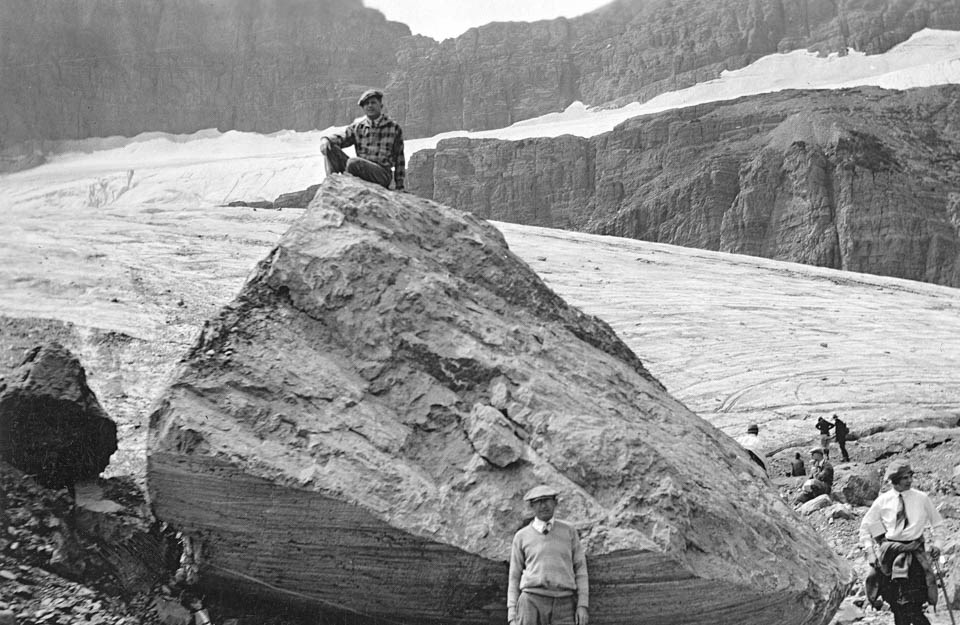
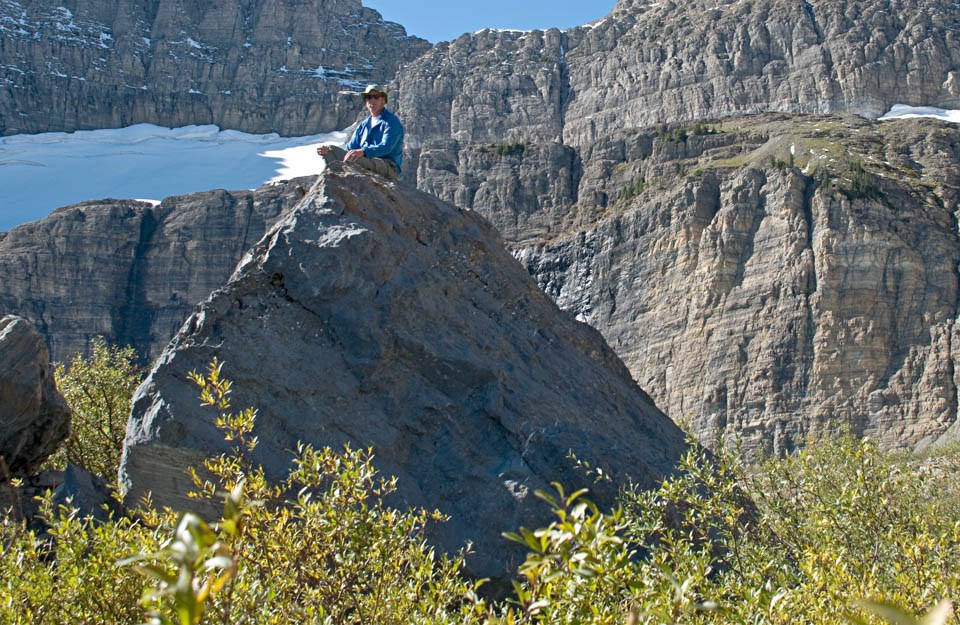
Left image: Morton J. Elrod, K. Ross Toole Archives, 1926
Right image: Lisa McKeon, USGS, 2008
Live and Learn
Who would have thought that the Little Ice Age didn’t “end”, that there was no “recovery.” The Early Anthropocene hypothesis seems to be approaching the amount of robustness required to become theory. What we can learn from this plausible new theory is that we still have a lot to learn about our climate and its interaction with our Earth systems.
This controversial discussion has continued for nearly two decades and it will undoubtedly continue further. But what we can understand already, is that our natural biosphere has a great capacity to mitigate for climate pollution. There are 470 billion tons of missing carbon in our global vegetation. This is nearly 2 trillion tons (1,700 gigatons) as carbon dioxide.
The time frames that Earth can regrow her forests on scales like this is quite short in big picture thinking, at fraction of the duration of the Little Ice Age. If we only had this amount of time to restore our climate before already activated tipping systems become irreversible. Still, natural systems can certainly help in decadedel time frames remaining before the point of no return.
There is one more challenge though. This is that there is a tremendous amount of degradation from climate warming that has already occured. Right now our global forests are likely at a tipping point where they flip from sequestration to emissions. When this occurs, or as this occurs, it will become extremely difficult if not impossible to get our forests to grow back so they can sequester, like they did during pulses of plague over the last 1,000 years and as has been responsible for the human-caused warming of the last 7,000 to 10,000 years, that offset what was likely the onset of a new ice age.
To allow our forests to regrow, to restore them so they can help with this Herculean climate task ahead of us, we must restore Earth back to within the evolutionary boundaries of her systems, not allow her to warm further from our current 1.1 C above normal to 1.5 C, as the almost unanimous global position says we can do. Further warming makes things worse. If our forests are already in collapse, further warming will make them collapse even faster. So to allow our forests to help, first we must reduce Earth’s temperature, not allow it to warm further.
We also only have a limited amount of time to restore our climate, likely far sooner than 2100. If current warming has allowed our forests to collapse, we must cool ERAth cooler than current warming or why would we think the collapse would magically stop?
This is something we can most certainly do through atmospheric CO2 removal regardless of what we hear in the press and some academic findings. Ruddiman’s Early Anthropocene Hypothesis is a prime example of why there are assumptions and findings in academic literature that do not reflect reality. These things are based on scenarios. The scenario that humankind’s meaningful greenhouse gas emissions are only from the age of industrialization speaks to this. The scenarios that say we cannot remove CO2 from our atmosphere, that say impacts are locked in, or that the extremes are the new normal, they will not get better, only worse, that the best we can do is avoid the worst: these things are based on scenarios. If there is no restoration scenario and there are none of the 1,202 scenarios in the latest Intergovernmental Panel on Climate Change report that are cooler than 1.5 C, if the only scenarios science upon which policy is based considers a 1.5 C warming target that allows us to continue to warm, then of course the solutions to a world where our climate is restored to within Earth’s systems evolutionary boundaries are unknown.
Please help to include restoration scenarios in climate science. Tell your elected officials. Tell your friends.
Southeast Shore of Walker Lake National Natural Landmark
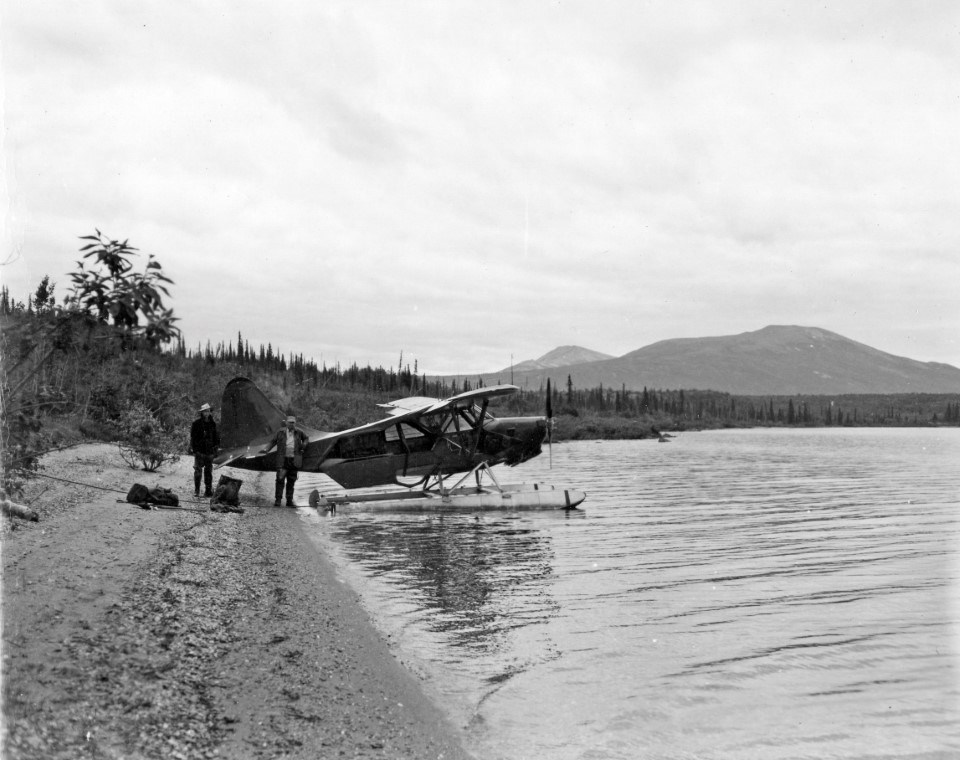
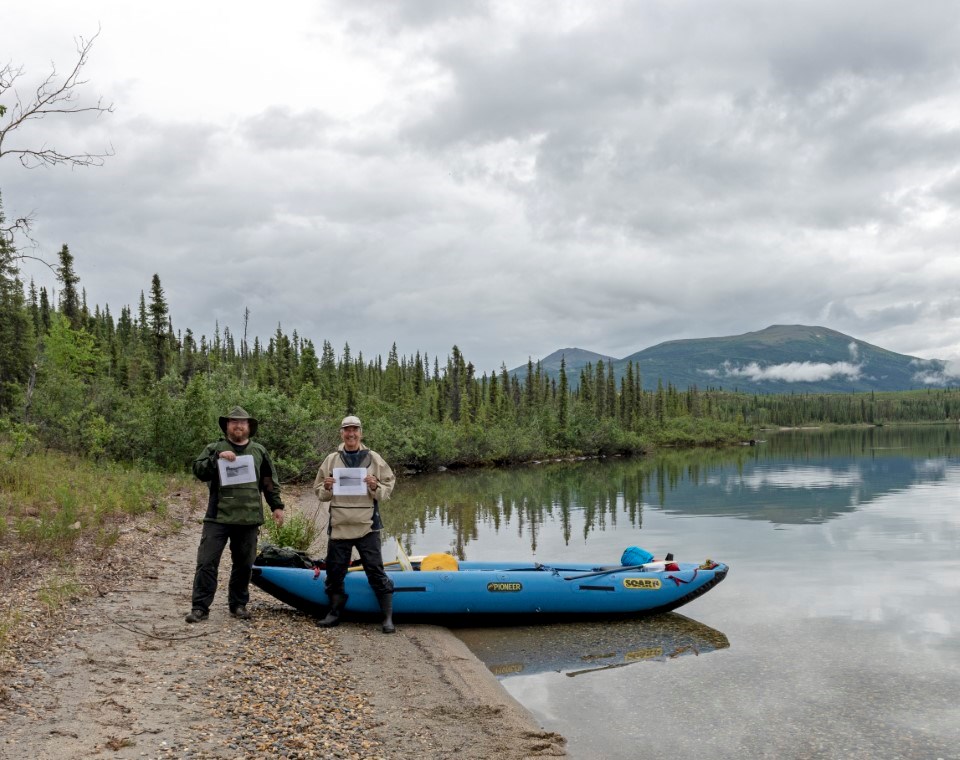
Left image: July 9, 1952, A.T. Fernald/U.S. Geological Survey:
Right image: July 10, 2018, R.D. Karpilo Jr./National Park Service
Repeat Photography Gates of the Arctic National Park and Preserve, National Parks Service, https://www.nps.gov/gaar/learn/photosmultimedia/repeat-photography.htm
REFERENCES FOR PHOTOS
Repeat Photography, unless otherwise noted, from the National Park Service, Repeat Photography: Capturing Change, https://www.nps.gov/glba/learn/nature/time-lapse-sliders.htm and,
The Receding Glaciers, Sierra Club
http://tlgsierraclub.org/pdfs/TheRecedingGlaciers.pdf
1) Eighty-five percent of Northern Hemisphere glaciers terminating in the ocean have been retreating since 2000…
Kochtitzky and Copland, Retreat of Northern Hemisphere Marine-Terminating Glaciers, 2000–2020, Geophysical Research Letters, January 10, 2022.
https://agupubs.onlinelibrary.wiley.com/doi/10.1029/2021GL096501
2) Nine-thousands gigatons of ice have melted from glaciers since the 1960s…
World Glacier Monitoring Service
https://wgms.ch/sea-level-rise/
3) Four cold and warm climate epochs in the last 2000 years…
Barbuzano, The Little Ice Age Wasn’t Global, but Current Climate Change Is, EOS, July 24, 2019.
https://eos.org/articles/the-little-ice-age-wasnt-global-but-current-climate-change-is
4) Encyclopedia Britannica…
Rafferty, What Was the Little Ice Age?, Encyclopedia Britannica, online 12/2/2022
https://www.britannica.com/story/what-was-the-little-ice-age
5) Journal of Space Weather and Space Weather and Space Climate…
Owens et al., The Maunder minimum and the Little Ice Age: an update from recent reconstructions and climate simulations, Journal of Space Weather and Space Climate, November 14, 2017.
https://www.swsc-journal.org/articles/swsc/pdf/2017/01/swsc170014.pdf
6) Akasofu 2010…
Akasofu, On the recovery from the Little Ice Age, Natural Science, November 2010.
https://www.scirp.org/journal/paperinformation.aspx?paperid=3217
7) NASA doesn’t think it was solar…
There Is No Impending ‘Mini Ice Age’, NASA, February 13, 2020.
https://climate.nasa.gov/ask-nasa-climate/2953/there-is-no-impending-mini-ice-age/#:~:text=Current%20theories%20on%20what%20caused,likely%20played%20the%20title%20role.age?
8) High solar activity and low volcanic activity created changes in atmospheric circulation that allowed an intrusion of warm water into the North Atlantic…
Lapointe and Bradley, Little Ice Age abruptly triggered by intrusion of Atlantic waters into the Nordic Seas, Science Advances, December 15, 2021.
https://www.science.org/doi/10.1126/sciadv.abi8230#:~:text=It%20began%20in%20the%2013th,Atlantic%20(2%2C%203).
9) Soot Deposition ended the Little Ice Age?
Schiermeier, How soot killed the Little Ice Age, Nature, September 2, 2013.
https://www.nature.com/articles/nature.2013.13650
Full – Painter et al., End of the Little Ice Age in the Alps forced by industrial black carbon, PNAS, September 19, 2013.
https://www.pnas.org/doi/epdf/10.1073/pnas.1302570110
10) Not soot after all…
Sigl et al., 19th century glacier retreat in the Alps preceded the emergence of industrial black carbon deposition on high-alpine glaciers, Cryosphere, October 16, 2018.
https://tc.copernicus.org/articles/12/3311/2018/#:~:text=TC%20%2D%2019th%20century%20glacier%20retreat,deposition%20on%20high%2Dalpine%20glaciers
11) Swiss Glacier have lost half their volume between 1936 and 2016…
See Figure 1(d) Mannerfelt at al., Halving of Swiss glacier volume since 1931 observed from terrestrial image photogrammetry, Cryosphere, August 22, 2022.
Full – https://tc.copernicus.org/articles/16/3249/2022/tc-16-3249-2022.pdf
Phys.org summary, https://phys.org/news/2022-08-historical-perspective-glacial-retreat.html
12) Beyond ocean terminating glaciers, most of the world’s glaciers are now in retreat…
Marta et al., The Retreat of Mountain Glaciers since the Little Ice Age, A Spatially Explicit Database, MDPI Data, October 9, 2021.
https://www.mdpi.com/2306-5729/6/10/107
13) How does the largest grouping of cooling volcanoes over the previous 1,000 years end the Little Ice Age?
Gao et al., Volcanic climate impacts can act as ultimate and proximate causes of Chinese dynastic collapse Nature Communications Earth and Environment, November 11, 2021. Figure 1.
https://www.nature.com/articles/s43247-021-00284-7#ref-CR42
14) The Early Anthropocene Hypothesis or the Ruddiman Hypothesis…
Ruddiman, The Anthropogenic Greenhouse Era Began Thousands of Years Ago, Climatic Change, December 2003.
https://link.springer.com/article/10.1023/B:CLIM.0000004577.17928.fa
Ruddiman, The early anthropogenic hypothesis – Challenges and responses, Reviews of Geophysics, October 31, 2007.
https://www.whoi.edu/cms/files/ruddiman07revg_69184.pdf
15) Early Anthropocene mega assessment 2019…
Stephens et al., Stephens et al., Archaeological assessment reveals Earth’s early transformation through land use, Science, August 30, 2019.
https://eprints.whiterose.ac.uk/149480/1/aax1192_CombinedPDF_v4.pdf
Review of Stephens 2019 in Journal of Global Policy…
Blaustein, The Ruddiman Hypothesis: A Debated Theory Progresses Along Interdisciplinary Lines, Journal of Global Policy, February 24, 2021.
https://www.globalpolicyjournal.com/blog/24/02/2021/ruddiman-hypothesis-debated-theory-progresses-along-interdisciplinary-lines
16) Ruddiman’s latest publishing; a review of 16 years of critique…
Ruddiman et al., The early anthropogenic hypothesis, A review, Science Direct, July 15, 2020.
Paywall – https://www.sciencedirect.com/science/article/abs/pii/S0277379120303486
Full – https://www.sciencedirect.com/science/article/am/pii/S0277379120303486
17) Three studies (references 17, 18 and 19) show Ruddiman’s 2003 estimate of carbon emissions from early agriculture accurate…
Kaplan et al., Holocene carbon emissions as a result of anthropogenic land cover change, The Holocene, December 30, 2010.
https://journals.sagepub.com/doi/abs/10.1177/0959683610386983
18) Erb et al., Unexpectedly large impact of forest management and grazing on global vegetation biomass , Nature, December 20, 2017.
https://www.nature.com/articles/nature25138
19) Lal et al, The carbon sequestration potential of terrestrial ecosystems, Journal of Soil and Water Conservation, November 2018.
https://www.jswconline.org/content/73/6/145A
